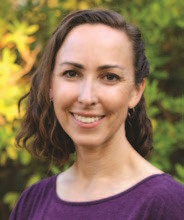Explaining ADHD to Kids
about ADHD now
will influence
how a child sees
themself for the
rest of their life.
Explaining ADHD to anyone is complicated, never mind a young child! For starters, attention deficit hyperactivity disorder:
- is not actually a deficit in attention,
- does not always involve hyperactivity, and
- does not lead to disorder in every environment.
Phew!
ADHD may be better explained as a pattern of difficulties with self-regulation. These may include difficulties with regulating attention (as opposed to a lack of attention), emotions, and behavior, which can cause significant challenges in certain environments—most notably, school.
 However, we also know that kids with ADHD each have their own profile of strengths, and these strengths can become their “superpowers.” These may include hyperfocus, creativity, experiential memory, passion, enthusiasm, and humor, to name a few.
However, we also know that kids with ADHD each have their own profile of strengths, and these strengths can become their “superpowers.” These may include hyperfocus, creativity, experiential memory, passion, enthusiasm, and humor, to name a few.
When we sit down to talk to a child about ADHD, it’s critical that we present the whole picture.
It’s too simplistic—and just not accurate—to say that ADHD means you have trouble with attention.
Rather, ADHD is a pattern of strengths and challenges that make some environments easy to navigate and others much more challenging. In fact, sometimes, the same characteristic that leads to challenges in one setting can make kids shine in another.
This article will walk you through the steps for helping your child create a positive and empowering narrative about what ADHD means for them.
1
What’s Their Problem?
To help explain ADHD to children in a positive and empowering way, I’ve found it most helpful to start with a problem that the child wants to solve, using their words.
To do this, you might think about something that has been difficult for your child recently, and how they would describe it. This may be different from how we as adults describe the problem.
This wording is important to make sure your child does not feel accused or shamed as we start our conversation.
Here are a few ways adults and kids may differ in the way they describe common challenges for ADHD brains.
| Adult Words | Kid Words |
| My child can’t pay attention. | It’s so boring! They’re distracting me! |
| My child is so impulsive. | I’m so embarrassed. I always get blamed for things. |
| My child has poor executive functioning skills. | I can’t find anything! I don’t know what to write. |
| My child rushes through work. | This takes too long! |
| My child has poor working memory. | There are too many steps! Why do I keep forgetting everything? |
Now you can use their “problem” to introduce the conversation. It may sound something like this:
- You know how you were saying [problem]?
- I learned some things that might help us understand why that has been so tricky.
- Can I share with you what I learned?
Here’s an example:
- You know how you were saying that you keep forgetting what’s due when?
- I was talking to Dr. Liz, and I learned some things that might help us understand why it’s been so tricky.
- Can I share what I learned?”
By using this phrasing, you are:
- Making the conversation relevant to the child
- Giving them hope that you’ll be able to help them solve a real problem
- Empowering them with choice and agency in having this vulnerable conversation
2
Identifying ADHD Strengths
The next step is sharing the child’s strengths. Using the “brain-building” construction metaphor that I tend to reference most, this may sound like:
“I learned that your brain is built in a way that makes a lot of things come easily! These are like the super-fast highways in your brain.”
While every child will have a different list, here are a few common strengths, or “highways,” that may be true for your child’s ADHD brain:
- Coming up with creative ideas for writing or storytelling
- Remembering experiences
- Doing better as things get harder
- Making people laugh
- Taking in a lot of information at once
- Jumping into new experiences
- Focusing intensely on things you enjoy
Which ones are true for your child? Take a second to jot them down—we’ll use them later.
It’s important to note that these highways are not in spite of ADHD—in fact, many ADHDers think of them as the benefits of their ADHD brain.
3
Naming ADHD Challenges
The next piece is to name the challenges your child faces.
You’ve just made a list of how awesome your child is—but their experience is not always that awesome. Naming challenges validates your child’s experience in a world that may not be supporting them in the way they need. This might sound like:
“I also learned that some things can be trickier for you. These are your construction projects, or what your brain is building.”
Again, while every child will have a slightly different list, here are a few common “construction projects” that may be true for an ADHD brain:
- Waiting to share your awesome ideas
- Writing your ideas down on paper
- Staying focused on boring or easy things
- Getting started on work
- Keeping track of all the steps
- Catching errors
- Keeping things organized
- Moving or fidgeting without disrupting others
Do any of these resonate with your child’s experience? Make a note—we’ll use them in the next step.
Now, let’s put it all together!
4
Defining ADHD for Your Child
A diagnosis is simply a way of bringing the highways and construction zones together. This may sound like:
“It turns out, many people have highways and construction zones just like yours. You’re not alone! This pattern is called ADHD.”
 By defining ADHD by your child’s experience—and not the DSM definition—it will be easier for them to understand and will empower them to be an active participant in their intervention plan.
By defining ADHD by your child’s experience—and not the DSM definition—it will be easier for them to understand and will empower them to be an active participant in their intervention plan.
Take a look at the list of highways and construction zones you made. Circle the ones that fit together like “two sides of a coin.”
Perhaps your child is very creative but has a hard time getting those ideas on paper. Maybe your child is a talented gymnast but struggles to sit still in class.
Now, to create your child’s personalized definition of ADHD, we can put these together using the following sentence frame:
“For you, ADHD means that your brain is built in a way that makes [your highways] come easily and [your construction projects] much more difficult.”
Here are a few “definitions” of ADHD we’ve come up with in my own practice with children:
- ADHD means your brain is built in a way that makes memory and creativity easy, but writing and waiting your turn more difficult.
- ADHD means your brain is noticing a lot of things at once, but it may be tricky to focus on the one thing your teacher is asking.
- ADHD means your brain enjoys things that are new and exciting, but it may be harder to learn things you have to repeat a lot, like math facts.
- ADHD means your brain is great at organizing people, but struggles to organize things.
5
You’re Not Alone!
I find it helpful to show kids examples of others who share their profile and have been successful. This includes actors, artists, entrepreneurs, and other children.
Everyone is a little different, so this is a great opportunity to emphasize that the way ADHD shows up for them may be different than how it shows up for other kids in their class, even though it has the same name.
Here are a few resources that may resonate with your child. Visit https://BrainBuildingBook.com/Parents for the complete Spreadsheet of Videos and Visuals for explaining ADHD to kids.
- “My Favorite Things About Having ADHD” from How to ADHD
- ADHD Comics
- “Famous People Get ADHD, Too” from EverydayHealth
- “Through Your Child’s Eyes” from Understood.org
6
Let’s Make a Plan!
Finally, it’s helpful to make a list of tools and strategies that will help your child maximize their strengths and build new skills. For example:
- You will be working with the learning specialist twice a week to learn strategies for getting ideas down on paper.
- Let’s brainstorm some helpful ways for you to move and fidget during homework to keep your brain engaged.
- You’ll be getting some extra time on tests to go back and check for little errors before turning it in.
- We’ll help you make a checklist for cleaning your room so it’s easier to get through it.
- Check out this circus class to build your performance and improv skills!
Now, the child is actively engaged in their intervention plan because they know exactly why it’s happening.
Building Strong Self-Advocates
I’ve found that this process helps give kids the language to advocate for what they need from their teachers and other caring adults—a skill they can use now and for the rest of their lives.
Many children share their personalized definition of ADHD with their IEP team, coaches, or even as a way to respond to other children who may question or tease them.
I hope this has been helpful to you and your amazing ADHD child!
Visit www.BrainBuildingBook.com/Parents for more helpful resources, including the complete conversation script for explaining ADHD to your child.


 Liz Angoff, PhD, is a licensed educational psychologist with a diplomate in school neuropsychology, providing assessment and consultation services to children and their families in the Bay Area, California. She is the author of the Brain Building book series, tools for engaging children in understanding their learning and developmental differences as part of the assessment process. More information about Dr. Liz and her work is available at
Liz Angoff, PhD, is a licensed educational psychologist with a diplomate in school neuropsychology, providing assessment and consultation services to children and their families in the Bay Area, California. She is the author of the Brain Building book series, tools for engaging children in understanding their learning and developmental differences as part of the assessment process. More information about Dr. Liz and her work is available at 